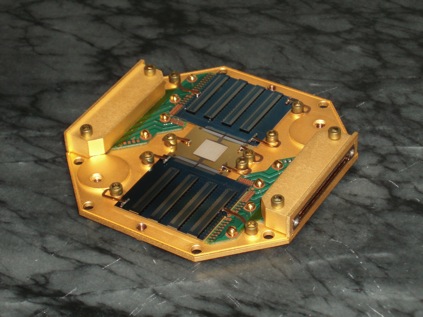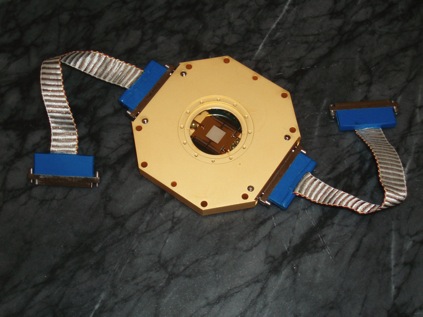Micro-X Hardware
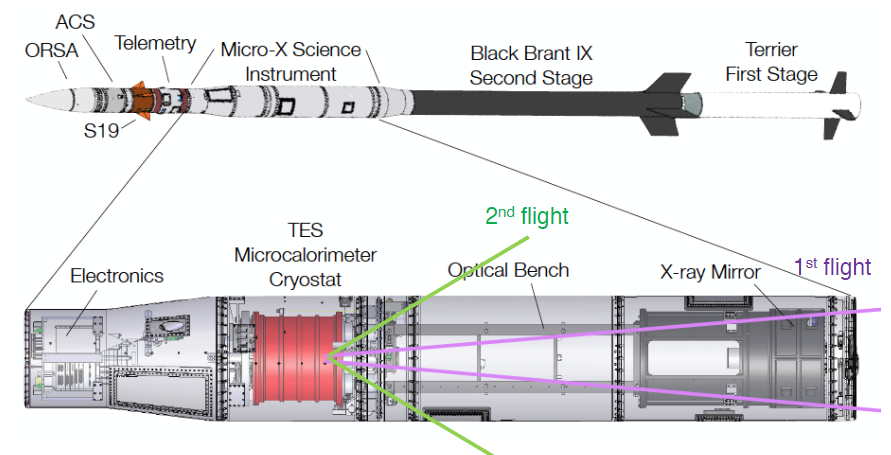
Rocket
We've been hard at work fabricating and assembling hardware for our upcoming flight. The rocket is pictured above and to the side. The science instrument, including the mirror, optical bench, cryogenic cooling system, detectors and readout electronics will be carried by a Terrier/Black Brant IX sounding rocket. The rocket will also house attitude control, boost guidance, recovery, and telemetry systems.
Mirror and Optical Bench
The Micro-X mirror is a conically approximated Wolter I optic recycled from the previous Supernova X-ray Spectrometer (SXS) sounding rocket flight in 1988. It has been refurbished and aligned at Goddard Space Flight Center. The optical bench is a rigid aluminum structure that holds the mirror such that its focal point is aligned with the detector array.
ADR
The Micro-X detectors are run at ~50 mK to limit the thermal noise in the signal. These are cooled and temperature controlled using an adiabatic demagnetization refrigerator (ADR). This uses the cycling of a superconducting magnet (cooled by liquid helium) to cool a paramagnetic Ferric Ammonium Alum (FAA) salt. This salt is connected to the detector array through a magnesium cold finger. Our detectors are superconductors held at the superconducting transition (see TES's for more information on the detectors). The temperature at which a material becomes superconducting is affected by the magnetic field it sees. We therefore need to protect our detectors from magnetic fields. A niobium magnatic shield and the superconducting magnet's bucking coil combine to provide this protection.
After everything has been cooled to ~1.8 K by filling the helium can with liquid helium and pumping on the bath, the superconducting magnet is ramped up to approximately 4 T. This aligns the spins of the atoms in the salt. The salt is thermally connected to the rest of the system during this process so it cools to ~1.8 K. Next, the thermal connection is removed and the magnet is ramped down slowly to zero magnetic field. This causes the spins in the salt to randomize, raising the entropy. Since this process is adiabatic the temperature responds to the rise in entropy by dropping. In practice the magnet is not ramped down all the way at the end of the cycle. As heat flows into the salt from the detector stage we continue to ramp down to maintain the temperature of the salt. The expected base temperature for our system is on the order of 50 mK.
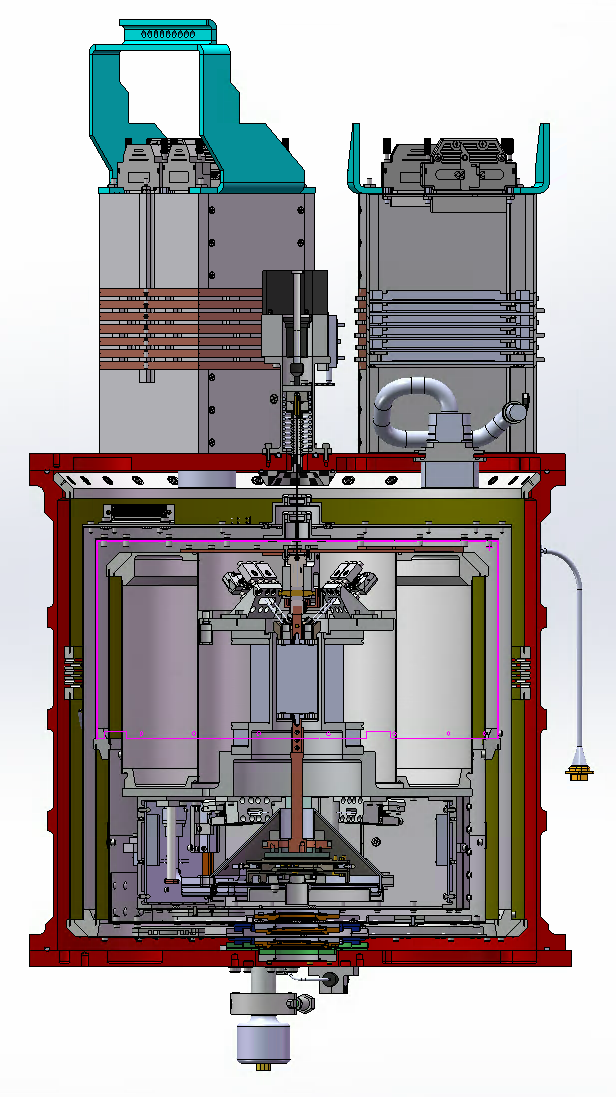
The magnet, salt, magnetic shields, FEA and liquid helium stage boards are all part of an assembly called the 'insert' that lifts out of the flight ADR as a whole. This is designed to expedite repairs and improve ease of access. The insert sits on the helium can. Infrared filters (silicon meshes with very thin layers of polyimide and aluminum deposited on them) protect the detectors from infrared radiation from warmer stages in the refrigerator. Another possible cause of detector heating is vibration. Rocket launch produces a large spectrum of vibrations and if the physical system is vibrated at resonance a significant amount of dissipation can occur raising the temperature of the cold stage significantly. The forward and aft damping assemblies are designed to minimize detector heating through vibration.
The science instrument, including the ADR, is being commissioned at Northwestern. NASA Goddard has developed the detectors, and NIST (Boulder, CO) will provide the readout electronics. The image below shows the assembled ADR with radiation shields removed. The outer red vacuum enclosure is 16 inches across.
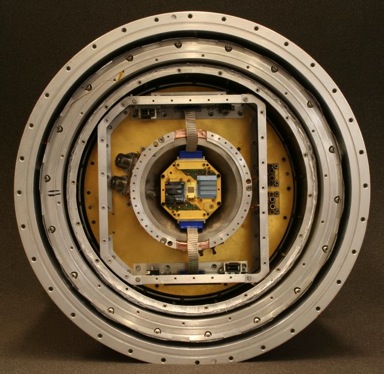
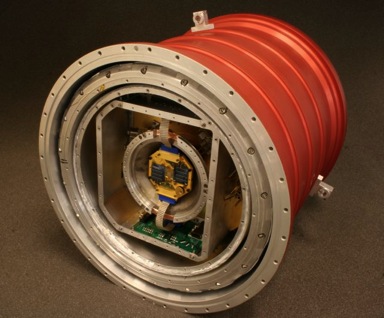
FEA
The focal plane is enclosed in a box that thermally shields the detectors. This assembly is called the Front End Assembly (FEA). This includes the detector array, the first two superconducting amplification stages, two germanium resistance thermometers (GRTs) and interface chips. The superconducting amplification stages are made up of Superconducting Quantum Interference Devices (SQUIDs). The FEA is assembled with a detector array and interface chips. It is shown below without the lid and with the lid and connectors attached. Missing from the assembly in these photographs are the GRTs and infrared filters.
